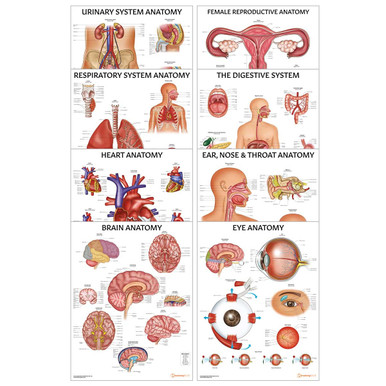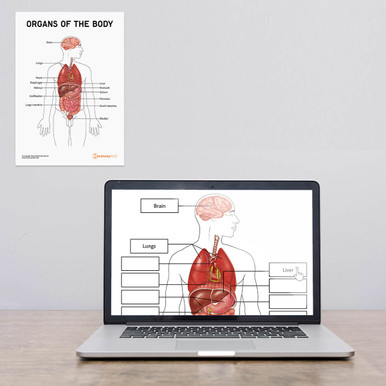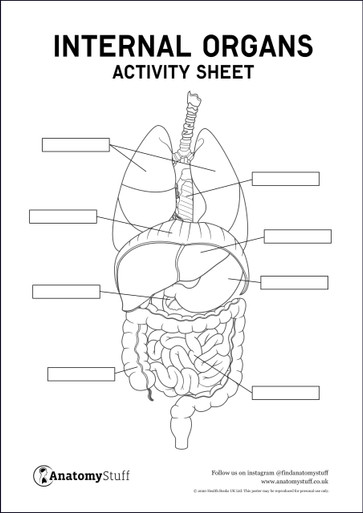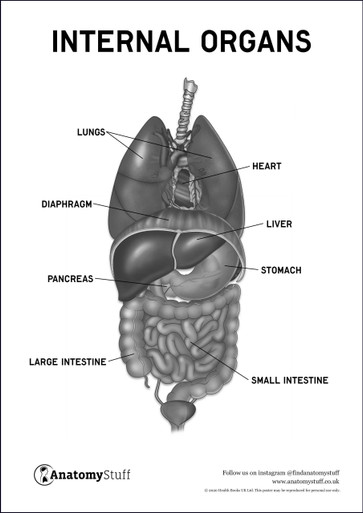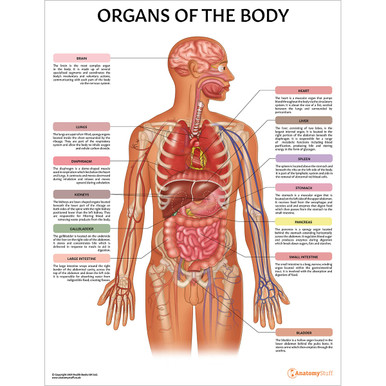Written by: Liz Paton, MSc
Internal Organs Overview
The human body contains 78 organs and 11 organ systems, all of which play their own role in keeping us alive and well.
This blog will go over some of the most essential internal organs including the: brain, lungs, heart, diaphragm, liver, gallbladder, spleen, pancreas, stomach, intestines and the bladder.
Brain
The brain is the most complex organ in the body. It is made up of several specialised segments and coordinates the body’s involuntary and voluntary actions, communicating with each part of the body via the nervous system.
Lungs
The lungs are a pair of air-filled, spongy organs located inside the chest surrounded by the ribcage. They are part of the respiratory system and allow the body to inhale oxygen and exhale carbon dioxide.
Heart
The heart is a muscular organ that pumps blood throughout the body via the circulatory system. It is about the size of a fist, nestled between the lungs and surrounded by pericardium.
Diaphragm
The diaphragm is a dome-shaped muscle used in respiration which lies below the heart and lungs. It contracts and moves downward during inhalation and relaxes and moves upward during exhalation.
Liver
The liver, consisting of two lobes, is the largest internal organ. It is located in the right portion of the abdomen beneath the diaphragm. It is responsible for a range of metabolic functions including blood purification, producing bile and storing energy in the form of glycogen.
Gallbladder
The gallbladder is located on the underside of the liver on the right side of the abdomen. It stores and concentrates bile which is delivered in response to meals to aid in digestion.
Spleen
The spleen is located above the stomach and beneath the ribs on the left side of the body. It is part of the lymphatic system and aides in the removal of abnormal red blood cells.
Pancreas
The pancreas is a spongy organ located behind the stomach extending horizontally across the abdomen. It regulates blood sugar and produces enzymes during digestion which break down sugars, fats and starches.
Stomach
The stomach is a muscular, hollow, digestive organ where the early stages of digestion begin. The stomach is located on the left side of the upper abdomen. It receives food from the oesophagus and secretes acid and enzymes that digest food which then passes from the stomach to the small intestine.
Intestines
Small Intestine
The small intestine is a long, narrow, winding organ located within the gastrointestinal tract. It is involved with the absorption and digestion of food.
Large Intestine
The large intestine wraps around the right border of the abdominal cavity, across the top of the abdomen and down the left side. It is responsible for absorbing water from indigestible food, creating faeces.
Bladder
The bladder is a hollow organ located in the lower abdomen behind the pubic bone. It stores urine which then empties through the urethra.
Free Download PDFs
View AllRelated Products
View All